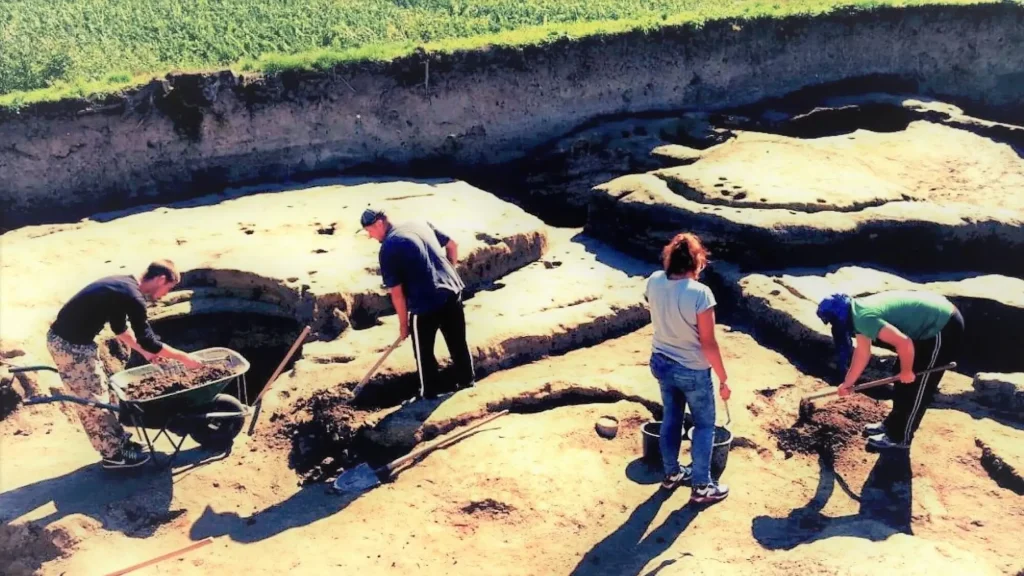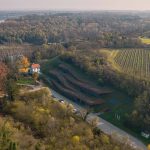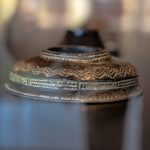But what about our ancestors after the stone age? What were their lifestyles like over the next 3,000 years?
A Croatian ancestral burial site may hold some answers.
A recent study on remains excavated from the Vučedol archeological site located in eastern Croatia was able to determine the long-term dietary choices, and the type of food that inhabitants consumed during the Bronze Ages.
Results point to the possibility that they consumed more animal proteins and fewer greens than our Paleolithic ancestors.
Where is Vučedol and what is the significance of this site?
Vučedol is an important archeological site located in the southwestern Carpathian Basin.
In terms of modern boundaries, the vast Basin spans across the territories of Hungary, Slovakia, Poland, Ukraine, Serbia, Croatia, Slovenia, and Austria.
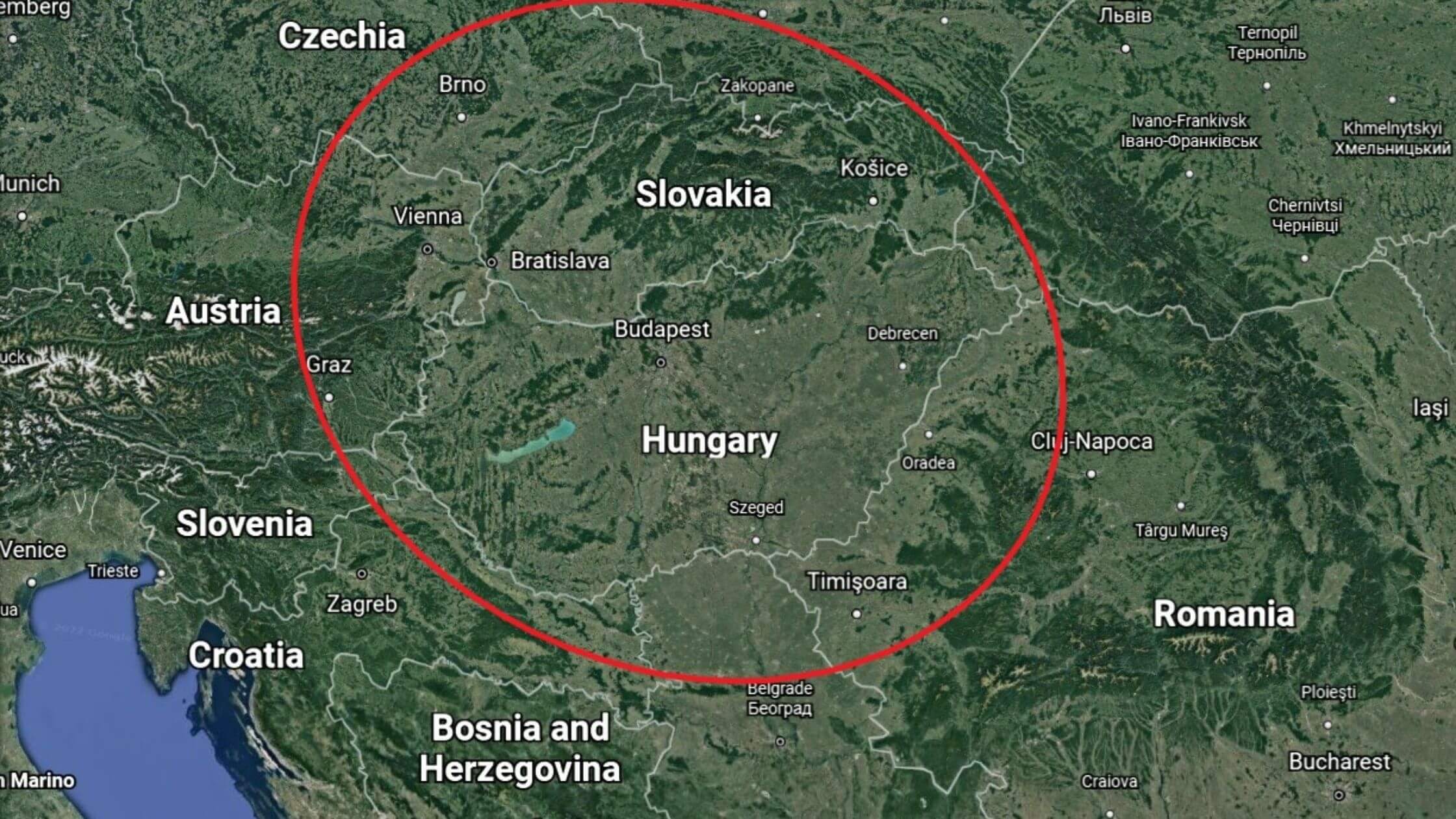
Outline of the Carpathian Basin with Modern Boundaries. Image: Google Earth
The Vučedol archeological site is located in the eastern region of Slavonia, along the Danube River, and is approximately 5 kilometers downstream from Vukovar.
While only 10% of the Vučedol site has been excavated today, rich findings from the area have improved our understanding of the late Stone, Copper, and Bronze Ages within the Carpathian Basin.
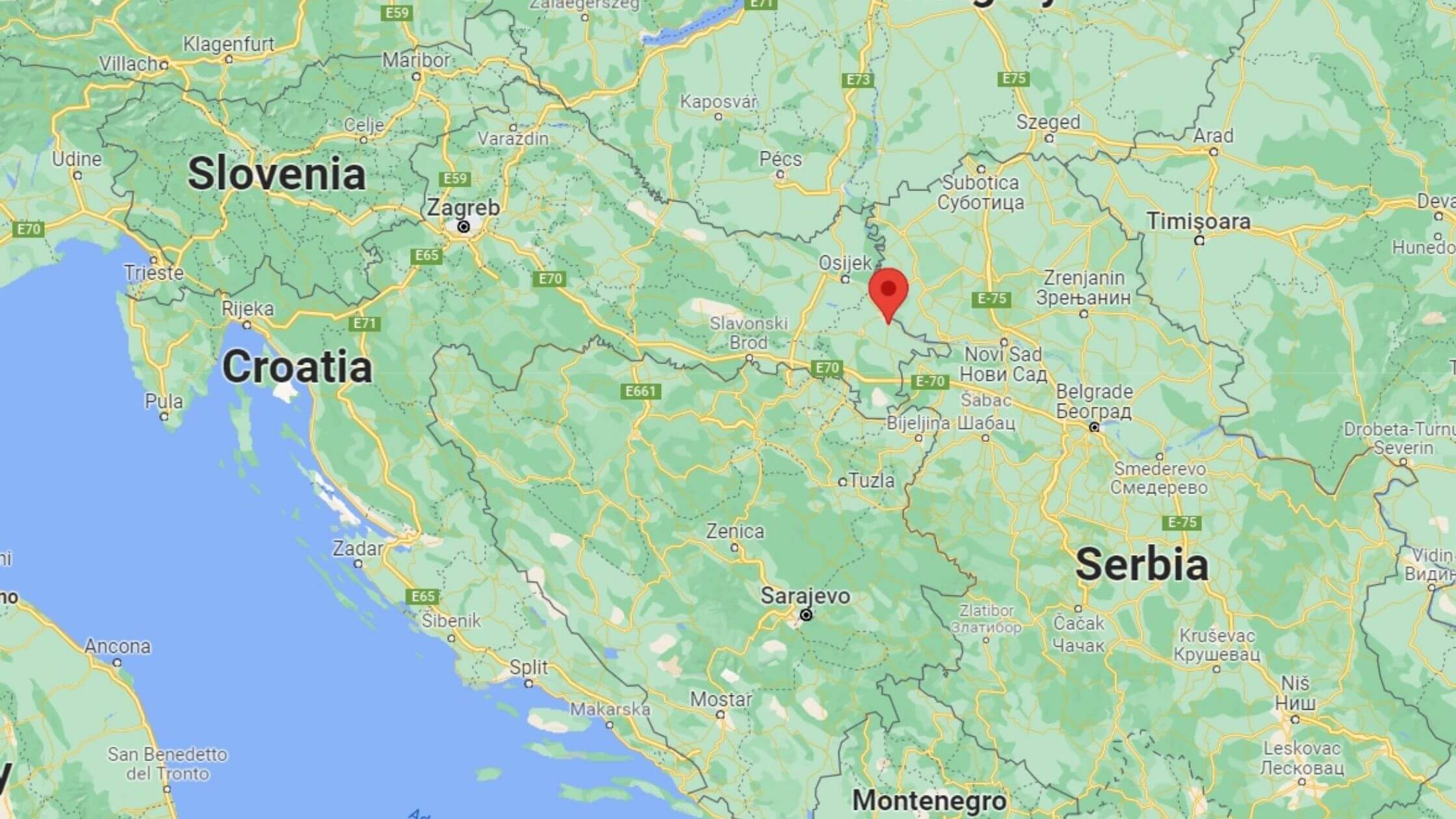
Location of Vukovar, Croatia. Image: Google Maps
For more in-depth reports of Vučedol heritage and archeological findings, take a look at TCN’s coverage here and here.
New insights
The remains at Vučedol were originally unearthed in 1897, where a total of 15 skeletons were found. However, due to technological and financial constraints, bioarchaeological data on these remains have been relatively scarce.
Fortunately, with access to modern scientific methods (i.e. stable isotope analysis) researchers have been able to revisit and conduct a series of tests on human remains excavated at Vučedol in the late 19th century.
Researchers suggest the graves dated back to the Early Bronze Age (3300-1200 BCE), but individuals were buried over a time period spanning several decades.
By examining the dental and skulls of the remains, the sex and age distributions of these remains stood out. The group was evenly represented by four male and four female skeletons. All individuals were able to reach adulthood.
Of these, 6 were considered ‘middle/older’ aged 35 years and older, while the other two were categorized as ‘young/sub adults’ (18-35 years).
Other archeological digs have unearthed remains from the same time period, but usually consisted of children or young/sub-adults. Although 5 of these individuals suffered from poor health during childhood, they were well enough to reach adulthood.
Some of the ailments they suffered were attributed to the lack of vitamins B12, and anemia brought on by iron deficiency and harsh living conditions.
During the Early Bronze Age, inhabitants experienced extensive socio-economic change. They lived through a period of great prosperity around 2500 BCE, lasting almost 150 years. Unfortunately, their fortunes reversed quite rapidly with a decline that lasted another 100 years.
Stone age vs. Bronze age diets
Researchers were also able to outline clear differences in diets between the Late Stone Age and the Early Bronze Age based on comparisons of stable isotope values from the remains.
It showed the reliance of inhabitants on different ratios of crops and animal proteins which evolved depending on the climate and social-economic conditions.
Generally, inhabitants of the Late Stone Age adopted similar agricultural practices. In line with the growing conditions of the area at the time, their diets were mostly made up of fibrous crops such as rice, wheat, barley, oats, beets, and potatoes as opposed to corn, sugarcane, or millet.
At the turn of the Early Bronze Age, it appears the region’s inhabitants began to incorporate more meat in their diet with a decrease in plant carbons in their remains compared to their Stone Age counterparts.
Researchers theorized inhabitants of the Early Bronze Age were able to regulate the farming of livestock, which provided them with a dependable source of protein.
Alternatively, the increase in protein consumption could also be due to the lack of abundant plant vegetation. Climate conditions during the time were seemingly not as hospitable to agricultural farming as those living during the Stone Age
They also supplemented their diet by hunting wild game such as deer and boar from the nearby forests. Occasionally, they caught fish from the Danube River, albeit to a much lesser extent than the consumption of animal proteins.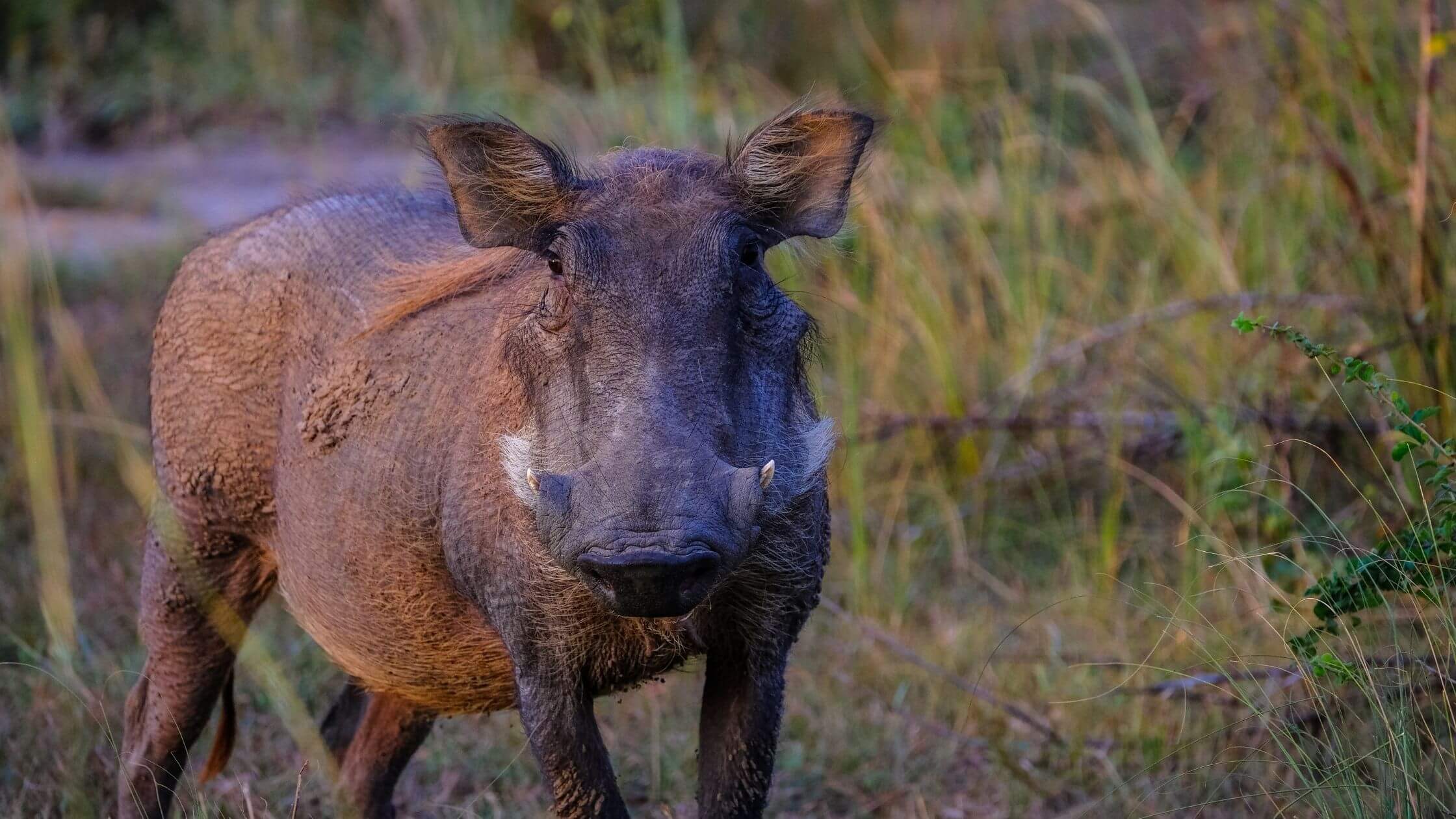
Wild Boar. Image: Francesco Ungaro/Pexels
While stable isotope analysis provides powerful insights into the types of food our ancestors consumed, for example, that they were likely eating more rice and potatoes than corn, it has limited application in identifying exact types of produce as well as serving sizes.
History of the Vučedol site
This site was inhabited for three millennia, from the Neolithic to the Bronze Ages (4000-1500 BCE), providing invaluable insights into the lives of people and the social and economic changes during this period.
Towards the end of the Copper Age, lived the Vučedol culture (3080-2340 BCE). The first recorded finds arrived at the Archeological Museum of Zagreb as early as 1894 through Josip Brunšmid, museum director.
This collection continued to grow due to the support of the Streim family who owned the land.
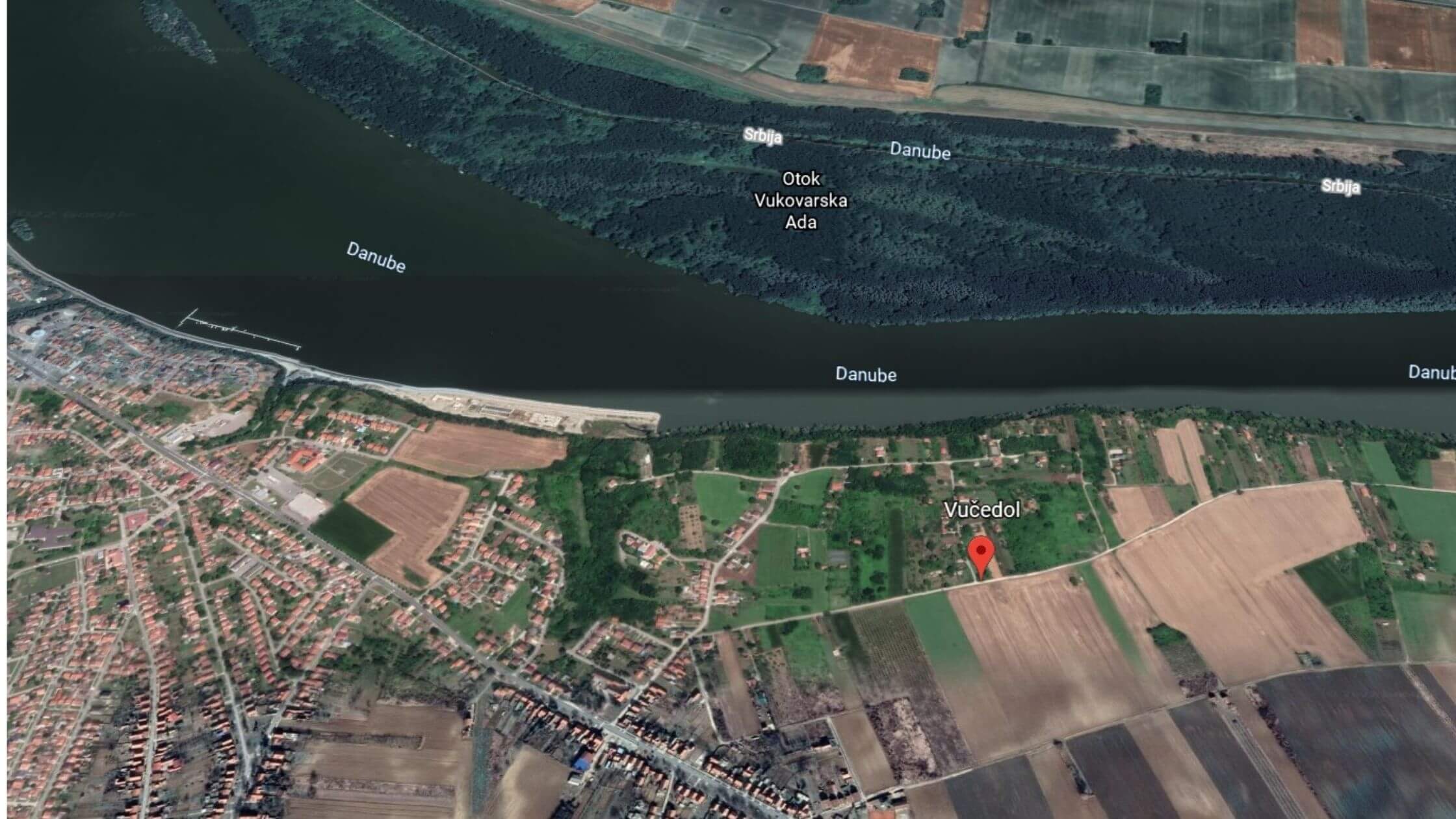
Vučedol, along the Danube River. Image: Google Earth
In one of the most famous finds surrounding the Vučedol site, ceramics were unearthed in 1938 by German archeologist RR Schmidt. The Vučedol culture was well known for the production of ceramics that required highly refined pottery skills.
These vessels are currently on display at the archeological museum in Zagreb.
For more, check out our dedicated lifestyle section.

